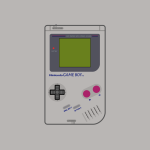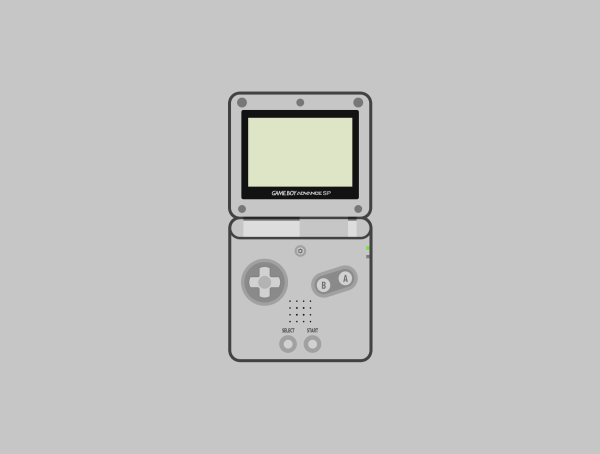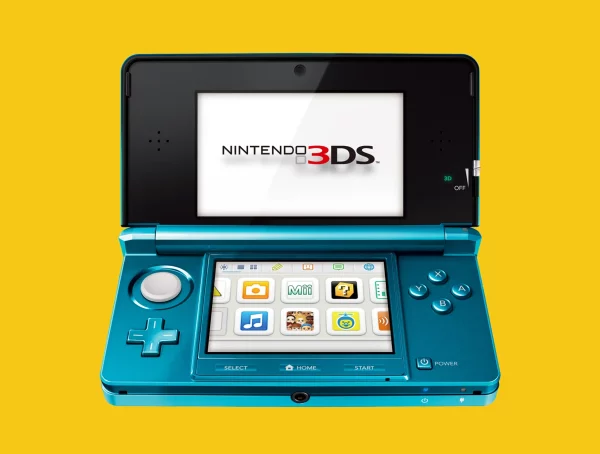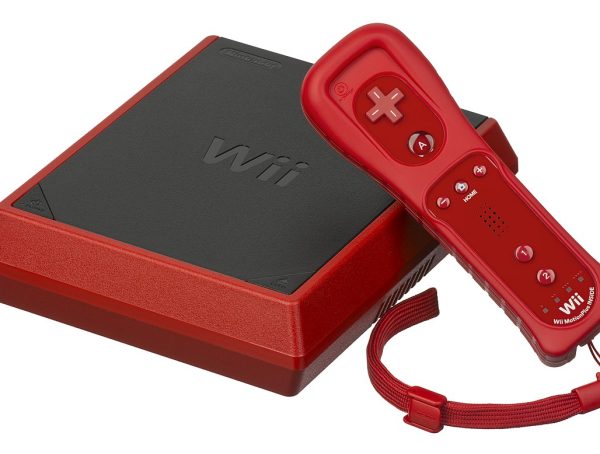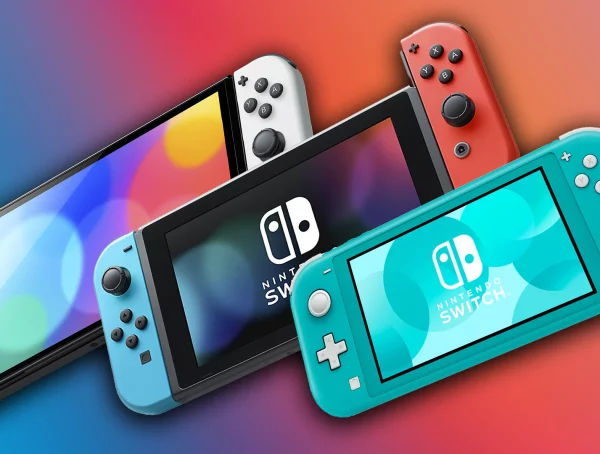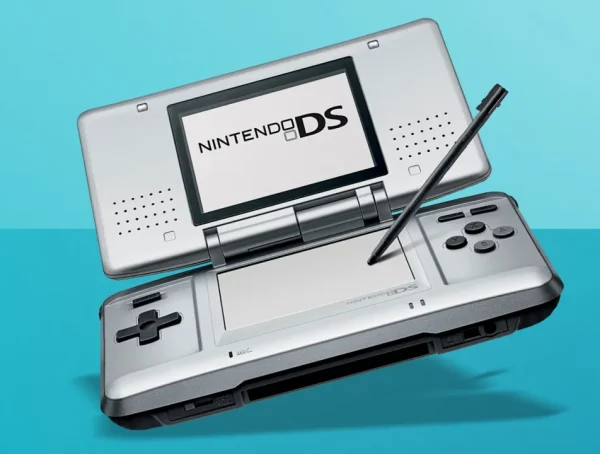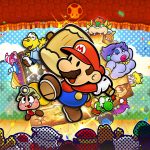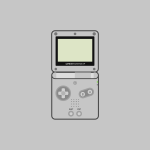The Wii U, launched by Nintendo in 2012, stands as one of the company’s most ambitious and controversial gaming systems. Following the massive success of the Nintendo Wii, the Wii U aimed to innovate further by introducing asymmetrical gameplay and a unique tablet-like controller. However, it also marked a turbulent chapter in Nintendo’s history, ultimately paving the way for the hybrid success of the Nintendo Switch.
Wii U A Successor With Big Shoes to Fill
After the groundbreaking success of the Wii (which sold over 100 million units), expectations for its successor were sky-high. However, the console struggled with identity, third-party support, and marketing clarity.
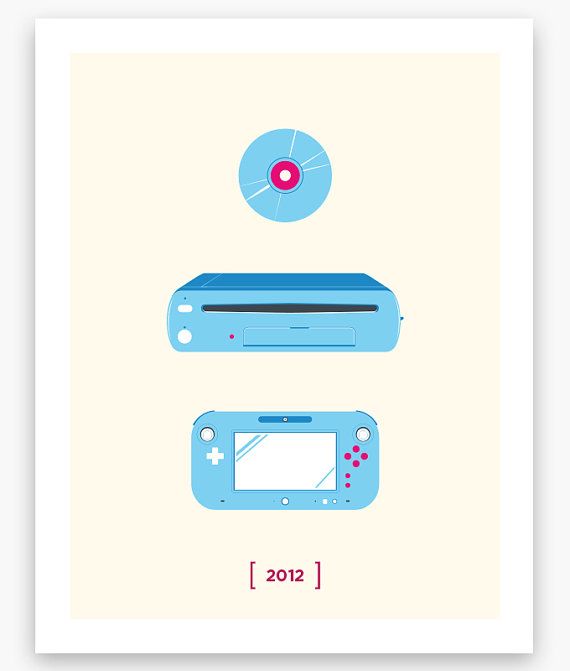
Launch and Initial Reception
The Wii U launched on November 18, 2012 in North America, followed by releases in Europe, Australia, and Japan. It was available in two main models:
- Basic Set (8 GB internal storage, white)
- Deluxe Set (32 GB internal storage, black, included Nintendo Land)
Initial excitement among Nintendo loyalists quickly gave way to confusion. Many consumers mistakenly believed the Wii U was merely an add-on for the Wii due to its similar branding and lack of clear messaging.
The GamePad: A Bold but Confusing Innovation
The Wii U’s signature feature was the Wii U GamePad, a controller with a built-in 6.2-inch touchscreen that supported stylus input, motion controls, and traditional button layouts. This allowed for asymmetric gameplay, where players using the GamePad had a different experience than those using standard controllers.
Features of the GamePad:
- 6.2″ resistive touchscreen (854×480 resolution)
- Traditional dual analog stick and button layout
- NFC support (used later for Amiibo)
- Front-facing camera and microphone
- Motion sensors (accelerometer and gyroscope)
While developers were intrigued by its possibilities, few fully capitalized on the GamePad’s potential.
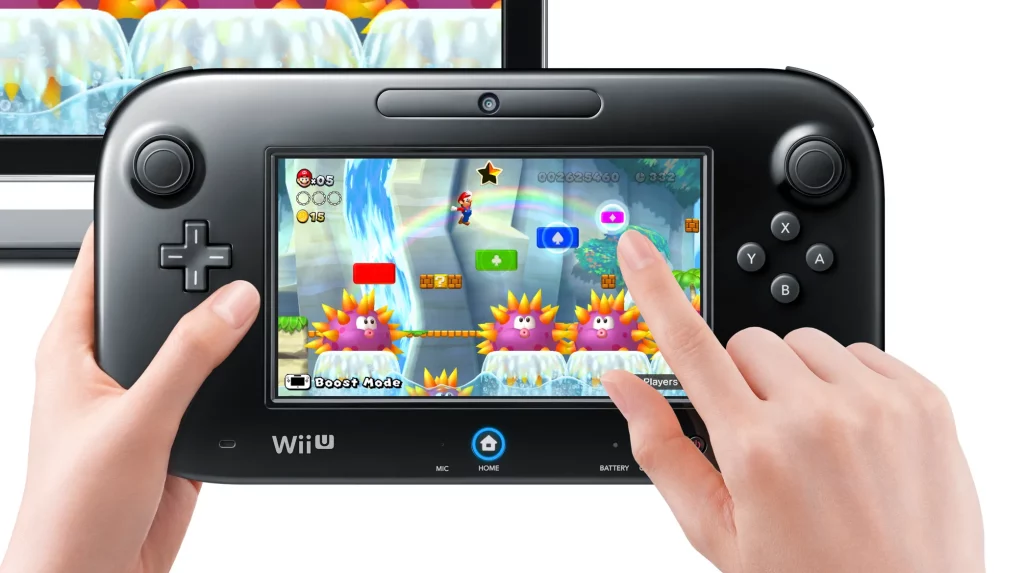
Technical Specifications
Wii U Console Specs:
- CPU: IBM PowerPC 750-based tri-core processor (“Espresso”)
- GPU: AMD Radeon-based High Definition GPU (“Latte”)
- RAM: 2 GB DDR3 (1 GB reserved for system)
- Storage: 8 GB (Basic) or 32 GB (Deluxe), expandable via USB
- Video Output: Up to 1080p (HDMI, component, composite)
- Backward Compatibility: Full support for Wii games and accessories
- Online Services: Nintendo Network, Miiverse, eShop
- Media Formats: Wii U Optical Disc (25 GB), backward compatible with Wii discs
- Connectivity: Wi-Fi, 4x USB 2.0, SD card slot
Nintendo Wii U Game Library and Notable Titles
Despite its commercial struggles, the Wii U featured a strong lineup of first-party games:
- Super Mario 3D World
- Mario Kart 8
- The Legend of Zelda: Wind Waker HD and Twilight Princess HD
- Splatoon (new IP)
- Super Smash Bros. for Wii U
- Bayonetta 2
- Donkey Kong Country: Tropical Freeze
- Pikmin 3
However, third-party support quickly dried up, with companies like EA, Ubisoft, and Activision pulling back development due to low sales and technical challenges.
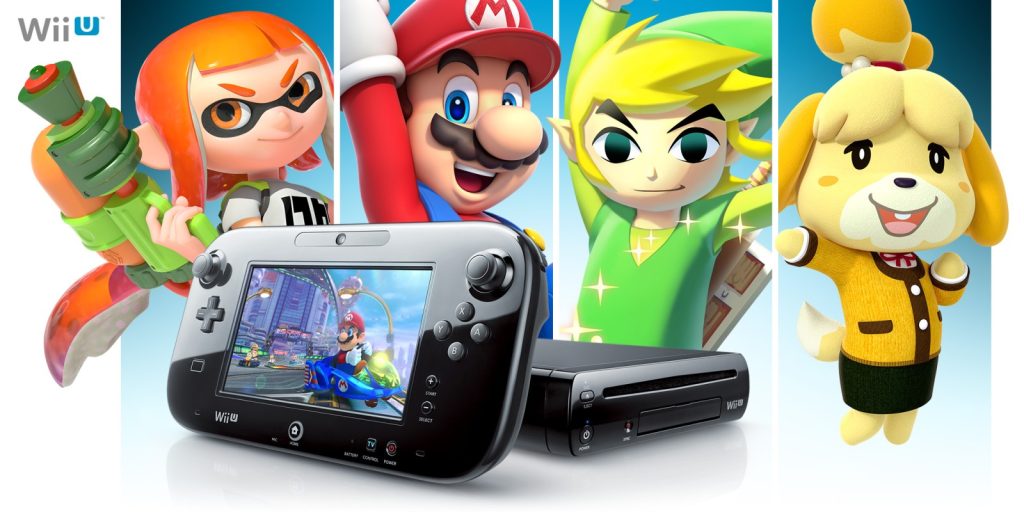
Wii U Challenges, Poor Sales and Decline
Several factors contributed to the Wii U’s poor commercial performance:
- Brand confusion: Many believed it was just an accessory for the Wii.
- Weak third-party support: Developers were unsure how to use the GamePad and didn’t see a large enough install base to justify ports.
- Slow marketing and release schedule: A lack of steady game releases hurt momentum.
- Underpowered hardware compared to PlayStation 4 and Xbox One, both released in 2013.
Despite price cuts and bundle offers, sales remained sluggish. By the end of its life cycle, the Wii U sold approximately 13.56 million units worldwide, making it Nintendo’s lowest-selling home console.
Legacy and Impact
While the Wii U is often remembered as a commercial failure, it laid the groundwork for the Nintendo Switch in several important ways:
- Hybrid gameplay concept: The GamePad served as a precursor to the Switch’s portable/home-console hybrid design.
- High-definition Nintendo games: The Wii U was the first Nintendo console to support HD visuals.
- Digital ecosystem improvements: The eShop and Nintendo Network provided the foundation for future digital services.
Some Wii U titles were so strong that they were re-released on the Switch, often becoming bestsellers (e.g., Mario Kart 8 Deluxe, Donkey Kong Country: Tropical Freeze, Pikmin 3 Deluxe).
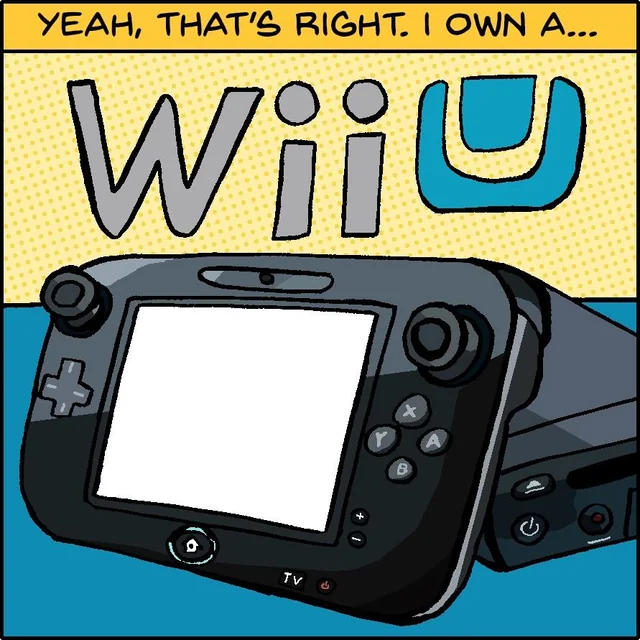
A Misunderstood Visionary
The Wii U represents a fascinating chapter in Nintendo’s history, a console filled with creative potential that never fully resonated with a wide audience. While its hardware and marketing missteps limited its success, its influence can be clearly seen in the thriving era of the Nintendo Switch.
Ultimately, the Wii U served as a bridge, flawed, but crucial, between the revolutionary Wii and the universally acclaimed Switch.
Fun Fact: The Wii U was the first Nintendo console to support native Miiverse integration, a unique social network for gamers that let players share messages and drawings directly from games.
You might also like
More from CONSOLES
Nintendo Wii Mini: Complete History, Versions, and Specs (2012)
The Nintendo Wii Mini is a lesser-known variant of the highly successful Nintendo Wii console. Designed as a more affordable …
Nintendo Switch: The Complete History and Versions of Nintendo’s Hybrid Revolution (2017)
Introduction When the Nintendo Switch was launched on March 3, 2017, it wasn’t just a new console, it was a radical …
Nintendo DS: The Dual-Screen Revolution (2004)
The Nintendo DS, launched in 2004, marked a bold and innovative step in the world of handheld gaming. With its …
